Abstract
The capacities of BSA and DNP—protein conjugates to evoke reagin formation in rabbits were compared. Reagins to DNP generally appeared earlier and disappeared more rapidly from the circulation than did anti-BSA reagins. Initial formation of reagins proceeded with a logarithmic phase indicating a doubling time of 7–8 hours. Booster antigen injections resulted in some cases in a reagin response after a shorter latent phase than that observed after primary immunization. A secondary reagin response was more readily evoked in rabbits with low titres of agglutinating antibodies than in those with high titres. Anti-DNP reagins were demonstrable in a higher percentage of the injected rabbits than were anti-BSA reagins. The two types of reagins were equally sensitive to heat and 2-mercaptoethanol. A positive correlation between serum levels of anti-DNP but not anti-BSA reagins and agglutinating antibodies was demonstrated. Some evidence that a low antigen dose was more efficient than a high dose in evoking reagin formation was obtained. Treatment of rabbits with 6-mercaptopurine during the 1st week following antigen injection resulted in an increased latent phase and an enhancement of the production of anti-BSA reagins and some suppression of the formation of anti-DNP reagins.
Full text
PDF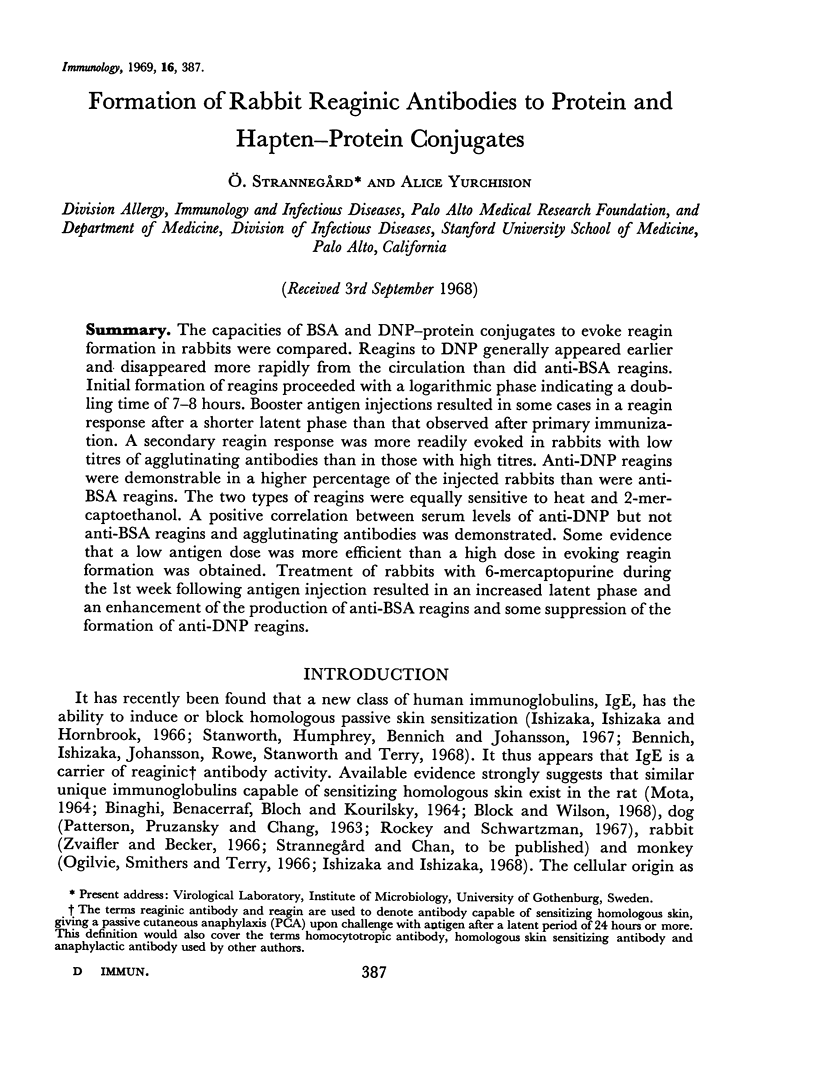
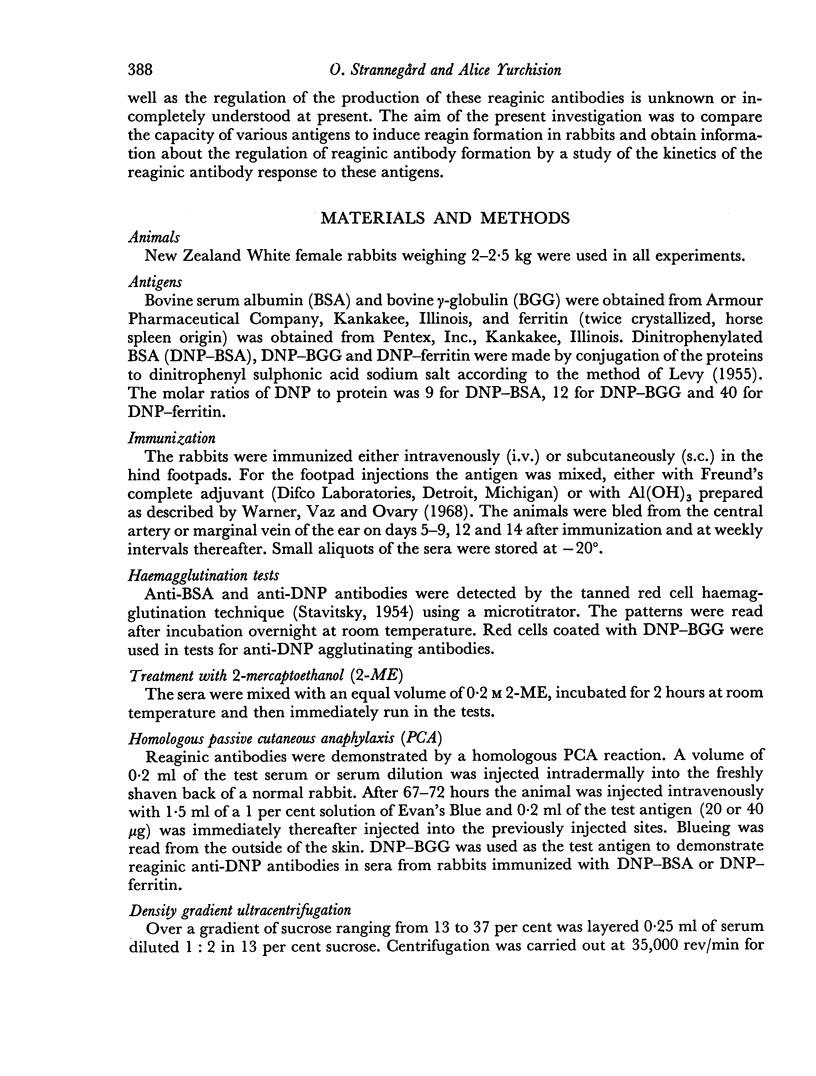
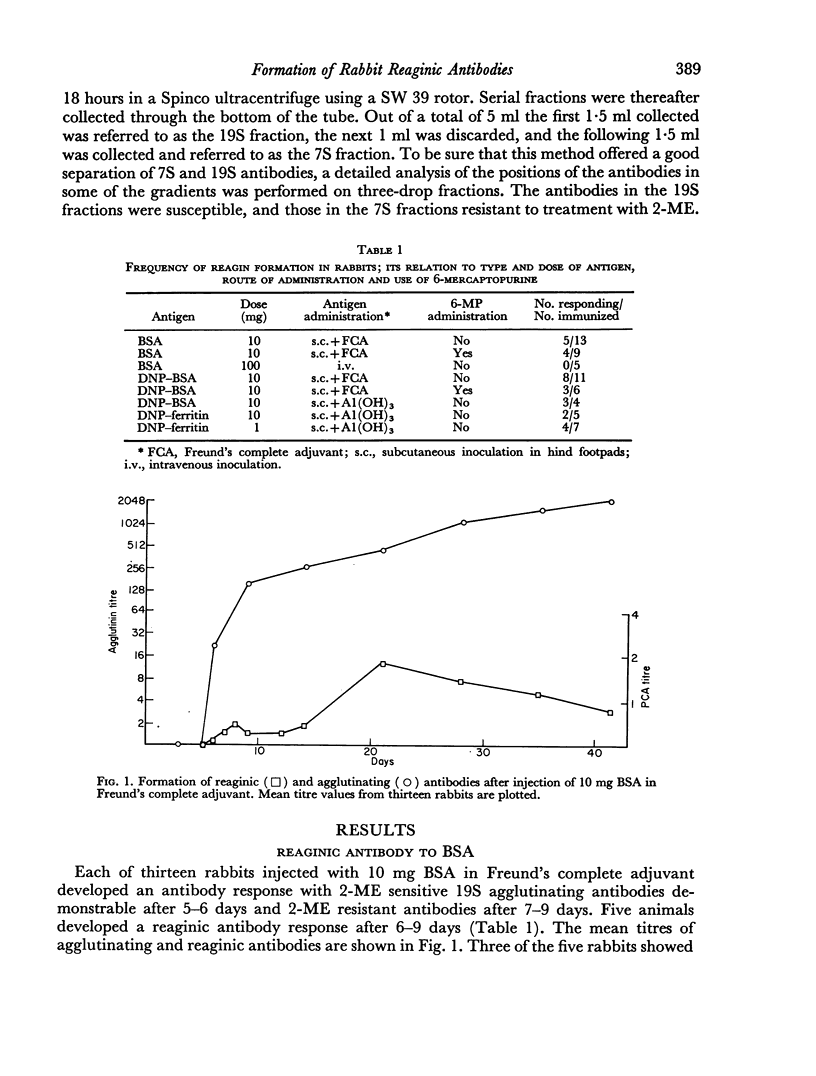
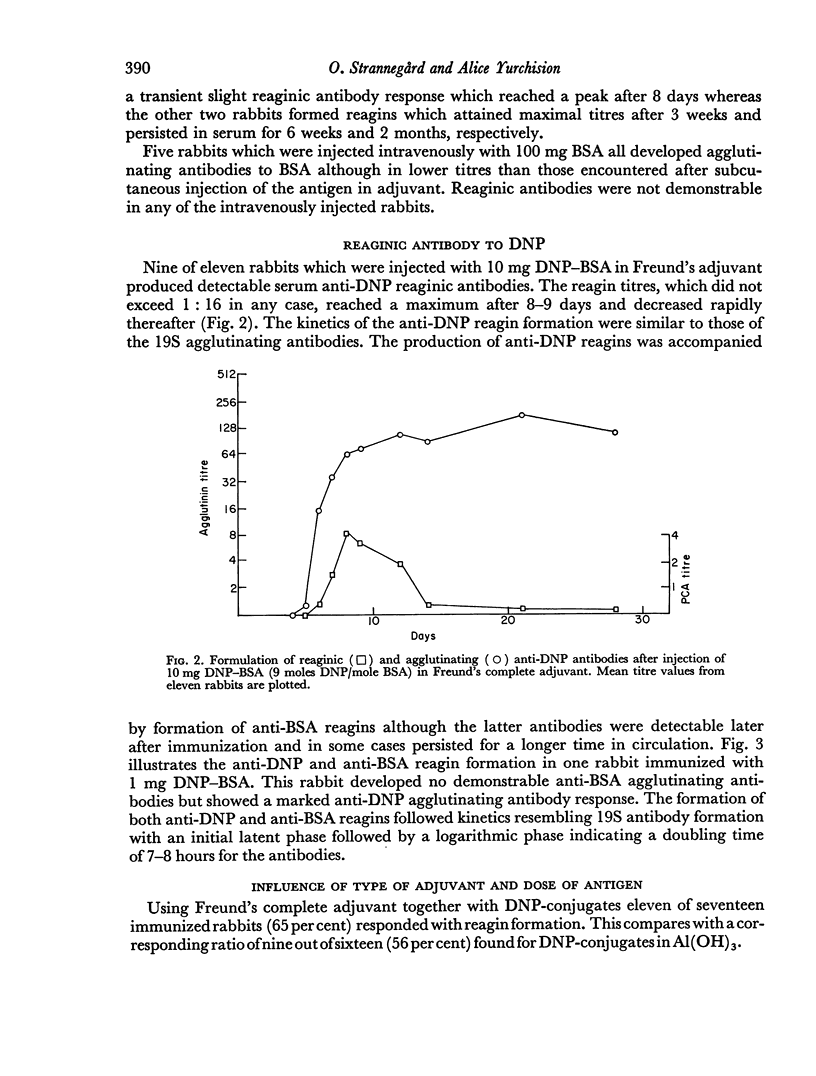
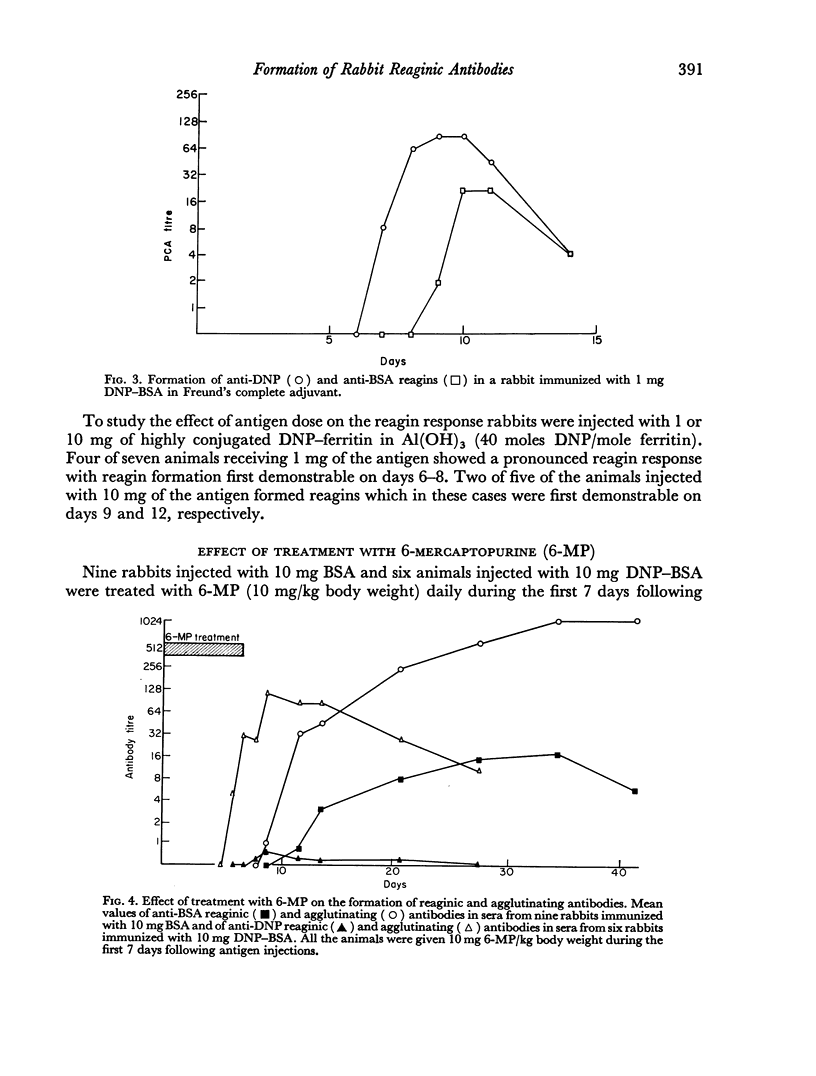
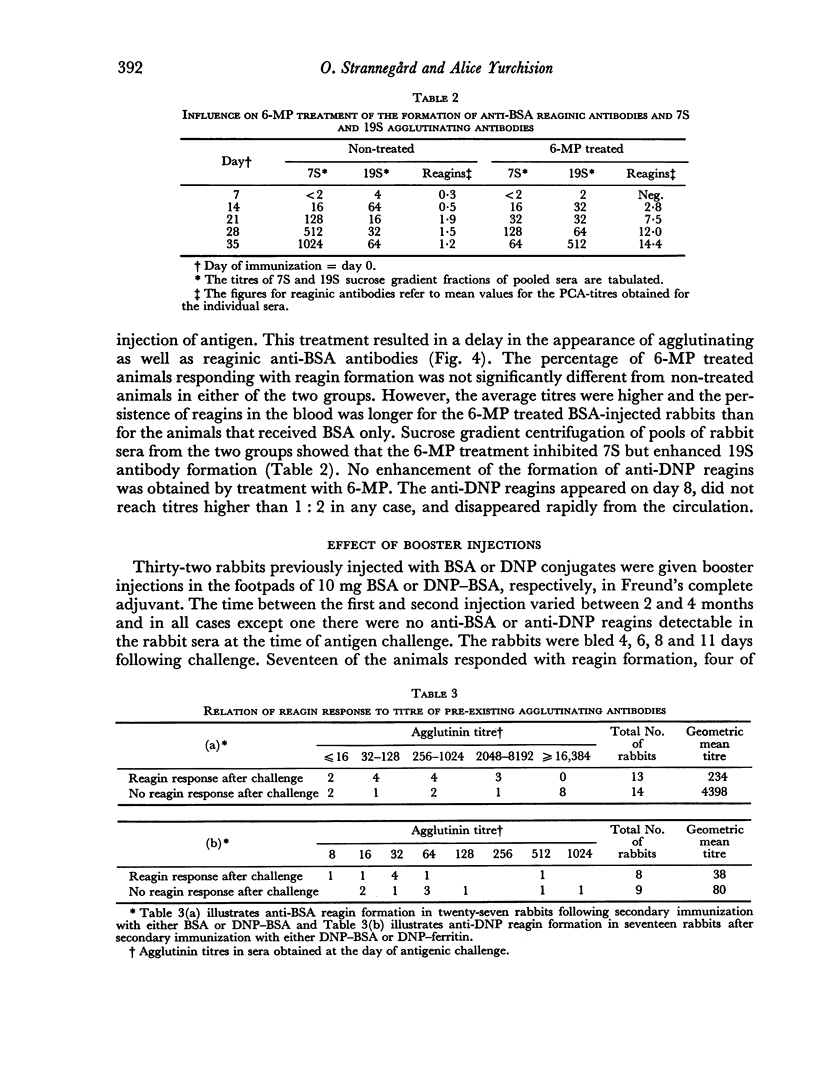
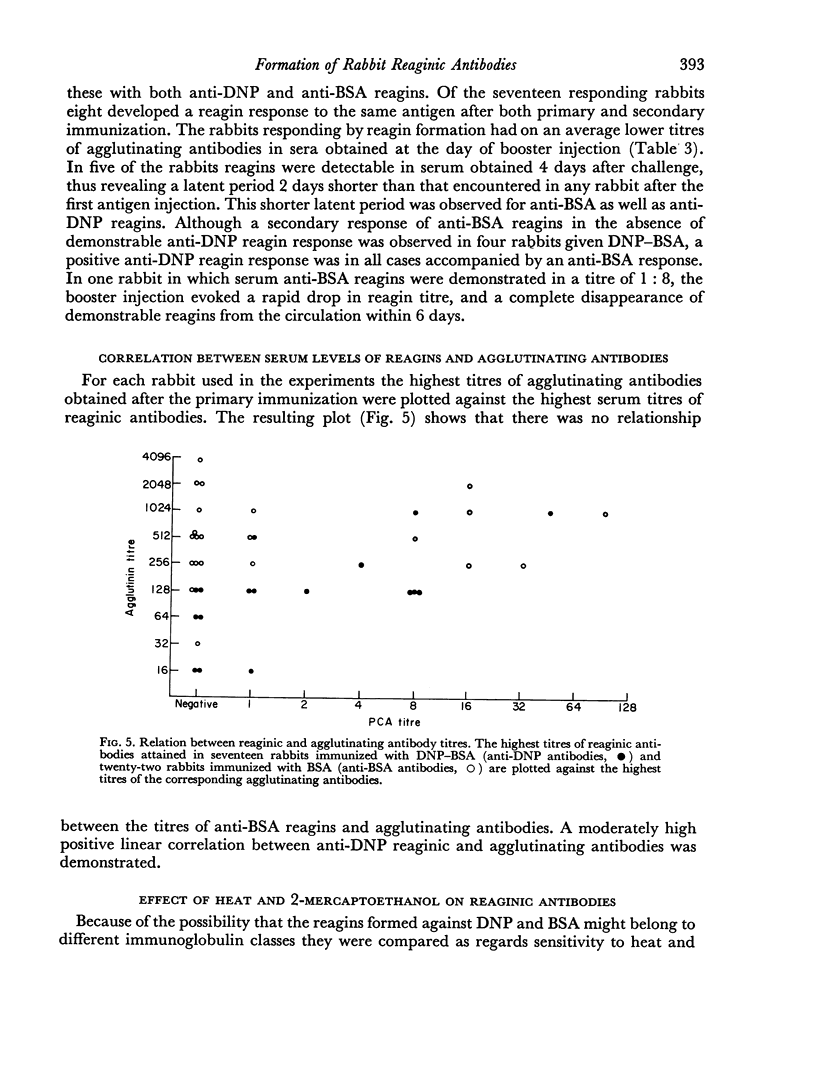
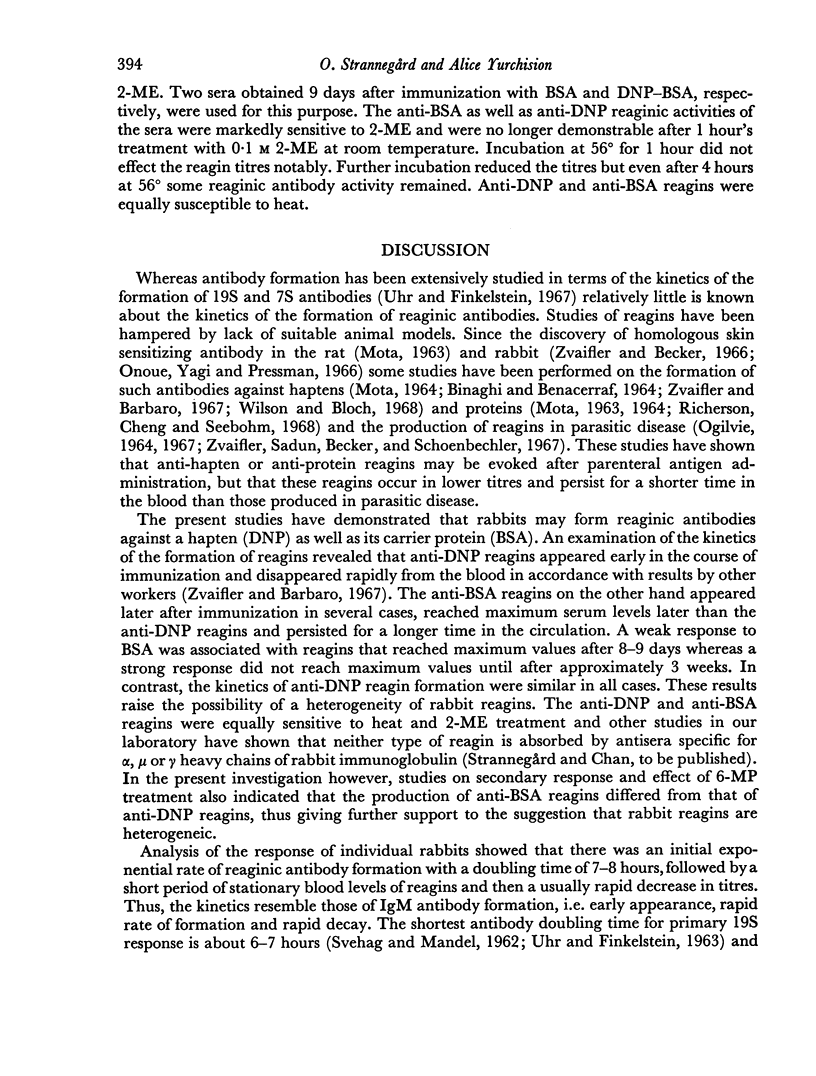
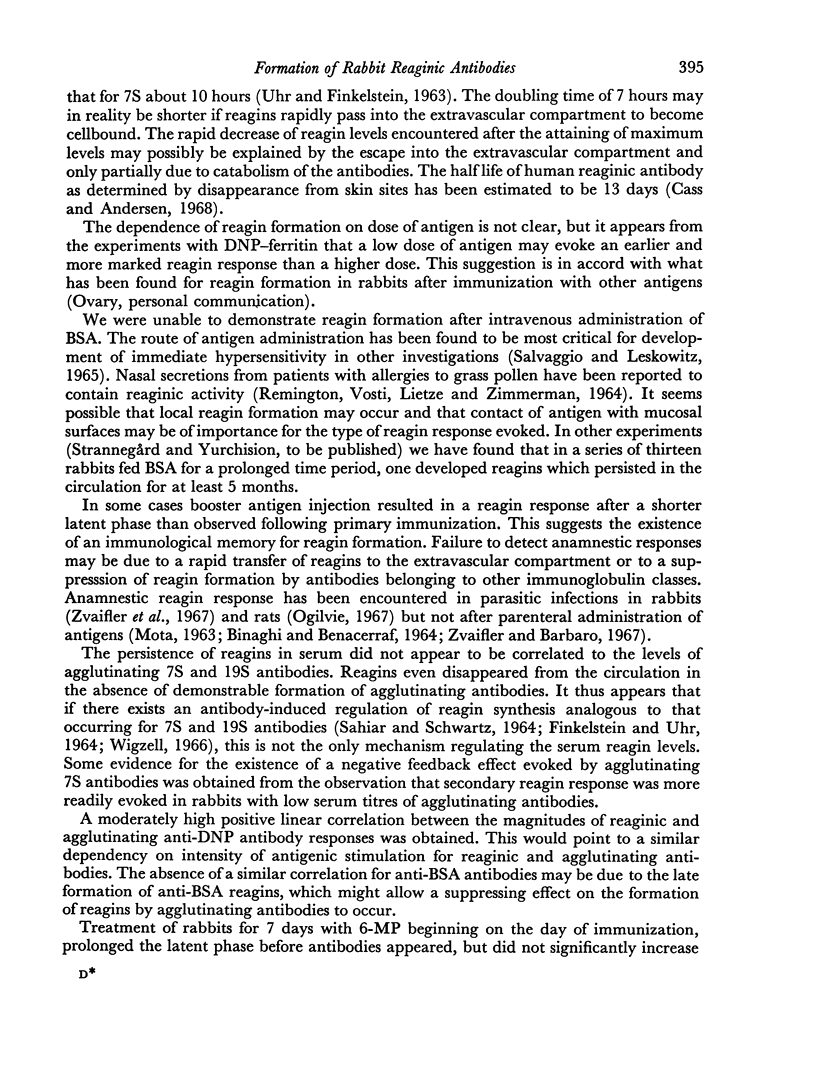
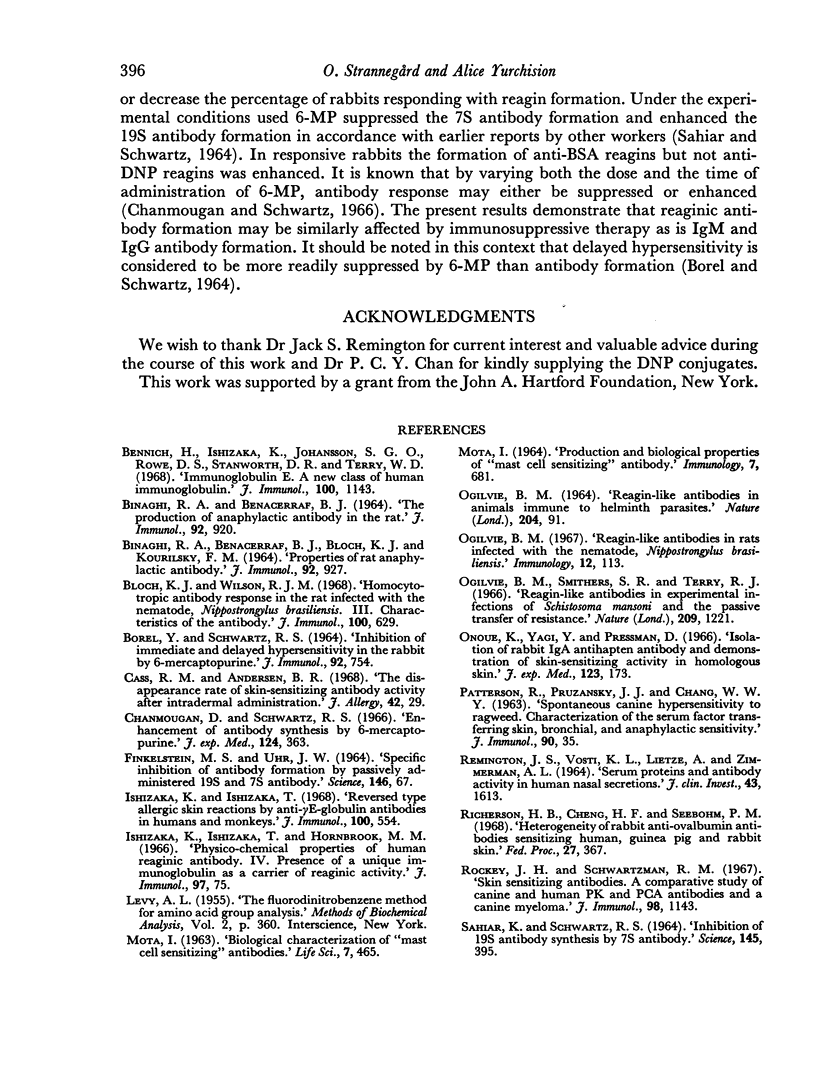
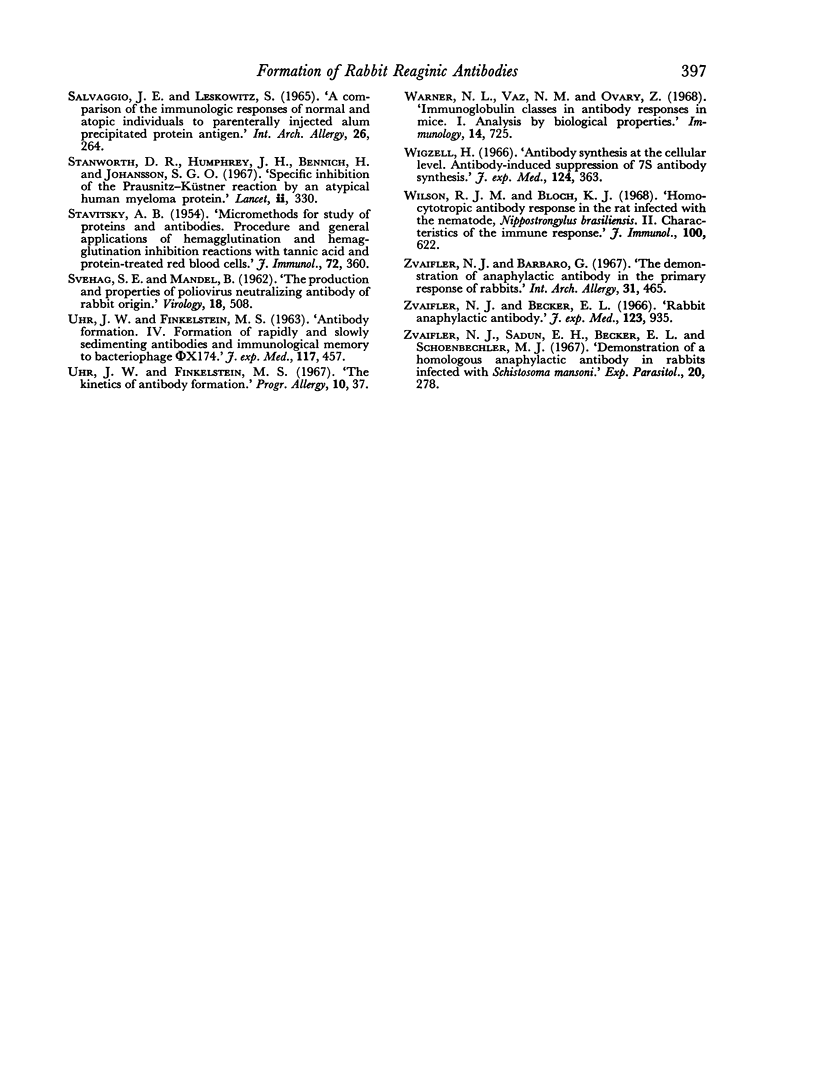
Selected References
These references are in PubMed. This may not be the complete list of references from this article.
- BINAGHI R. A., BENACERRAF B., BLOCH K. J., KOURILSKY F. M. PROPERTIES OF RAT ANAPHYLACTIC ANTIBODY. J Immunol. 1964 Jun;92:927–933. [PubMed] [Google Scholar]
- BINAGHI R. A., BENACERRAF B. THE PRODUCTION OF ANAPHYLACTIC ANTIBODY IN THE RAT. J Immunol. 1964 Jun;92:920–926. [PubMed] [Google Scholar]
- BOREL Y., SCHWARTZ R. INHIBITION OF IMMEDIATE AND DELAYED HYPERSENSITIVITY IN THE RABBIT BY 6-MERCAPTOPURINE. J Immunol. 1964 May;92:754–761. [PubMed] [Google Scholar]
- Bloch K. J., Wilson R. J. Homocytotropic antibody response in the rat infected with the nematode, Nippostrongylus brasiliensis. 3. Characteristics of the antibody. J Immunol. 1968 Mar;100(3):629–636. [PubMed] [Google Scholar]
- Cass R. M., Andersen B. R. The disapperance rate of skin-sensitizing antibody activity after intradermal administration. J Allergy. 1968 Jul;42(1):29–35. doi: 10.1016/0021-8707(68)90129-9. [DOI] [PubMed] [Google Scholar]
- Chanmougan D., Schwartz R. S. Enhancement of antibody synthesis by 6-mercaptopurine. J Exp Med. 1966 Sep 1;124(3):363–378. doi: 10.1084/jem.124.3.363. [DOI] [PMC free article] [PubMed] [Google Scholar]
- Chanmougan D., Schwartz R. S. Enhancement of antibody synthesis by 6-mercaptopurine. J Exp Med. 1966 Sep 1;124(3):363–378. doi: 10.1084/jem.124.3.363. [DOI] [PMC free article] [PubMed] [Google Scholar]
- FINKELSTEIN M. S., UHR J. W. SPECIFIC INHIBITION OF ANTIBODY FORMATION BY PASSIVELY ADMINISTERED 19S AND 7S ANTIBODY. Science. 1964 Oct 2;146(3640):67–69. doi: 10.1126/science.146.3640.67. [DOI] [PubMed] [Google Scholar]
- Immunoglobulin E. A new class of human immunoglobulin. J Immunol. 1968 May;100(5):1143–1143. [PubMed] [Google Scholar]
- Ishizaka K., Ishizaka T., Hornbrook M. M. Physico-chemical properties of human reaginic antibody. IV. Presence of a unique immunoglobulin as a carrier of reaginic activity. J Immunol. 1966 Jul;97(1):75–85. [PubMed] [Google Scholar]
- Ishizaka K., Ishizaka T. Reversed type allergic skin reactions by anti-gamma-E-globulin antibodies in humans and monkeys. J Immunol. 1968 Mar;100(3):554–562. [PubMed] [Google Scholar]
- MOTA I. Biological characterization of "mast cell sensitizing" antibodies. Life Sci. 1963 Jul;(7):465–474. doi: 10.1016/0024-3205(63)90134-6. [DOI] [PubMed] [Google Scholar]
- MOTA I. THE MECHANISM OF ANAPHYLAXIS. I. PRODUCTION AND BIOLOGICAL PROPERTIES OF 'MAST CELL SENSITIZING' ANTIBODY. Immunology. 1964 Nov;7:681–699. [PMC free article] [PubMed] [Google Scholar]
- OGILVIE B. M. REAGIN-LIKE ANTIBODIES IN ANIMALS IMMUNE TO HELMINTH PARASITES. Nature. 1964 Oct 3;204:91–92. doi: 10.1038/204091a0. [DOI] [PubMed] [Google Scholar]
- Ogilvie B. M. Reagin-like antibodies in rats infected with the nematode parasite Nippostrongylus brasiliensis. Immunology. 1967 Feb;12(2):113–131. [PMC free article] [PubMed] [Google Scholar]
- Ogilvie B. M., Smithers S. R., Terry R. J. Reagin-like antibodies in experimental infections of Schistosoma mansoni and the passive transfer of resistance. Nature. 1966 Mar 19;209(5029):1221–1223. doi: 10.1038/2091221a0. [DOI] [PubMed] [Google Scholar]
- Onoue K., Yagi Y., Pressman D. Isolation of rabbit IgA antihapten antibody and demonstration of skin-sensitizing activity in homologous skin. J Exp Med. 1966 Jan 1;123(1):173–190. doi: 10.1084/jem.123.1.173. [DOI] [PMC free article] [PubMed] [Google Scholar]
- Rockey J. H., Schwartzman R. M. Skin sensitizing antibodies: a comparative study of canine and human PK and PCA antibodies and a canine myeloma protein. J Immunol. 1967 Jun;98(6):1143–1151. [PubMed] [Google Scholar]
- SAHIAR K., SCHWARTZ R. S. INHIBITION OF 19S ANTIBODY SYNTHESIS BY 7S ANTIBODY. Science. 1964 Jul 24;145(3630):395–397. doi: 10.1126/science.145.3630.395. [DOI] [PubMed] [Google Scholar]
- SALVAGGIO J. E., LESKOWITZ S. A COMPARISON OF THE IMMUNOLOGIC RESPONSES OF NORMAL AND ATOPIC INDIVIDUALS TO PARENTERALLY INJECTED, ALUM PRECIPITATED PROTEIN ANTIGEN. Int Arch Allergy Appl Immunol. 1965;26:264–279. doi: 10.1159/000229578. [DOI] [PubMed] [Google Scholar]
- STAVITSKY A. B. Micromethods for the study of proteins and antibodies. I. Procedure and general applications of hemagglutination and hemagglutination-inhibition reactions with tannic acid and protein-treated red blood cells. J Immunol. 1954 May;72(5):360–367. [PubMed] [Google Scholar]
- SVEHAG S. E., MANDEL B. The production and properties of poliovirus neutralizing antibody of rabbit origin. Virology. 1962 Nov;18:508–510. doi: 10.1016/0042-6822(62)90050-8. [DOI] [PubMed] [Google Scholar]
- Stanworth D. R., Humphrey J. H., Bennich H., Johansson S. G. Specific inhibition of the Prausnitz-Küstner reaction by an atypical human myeloma protein. Lancet. 1967 Aug 12;2(7511):330–332. doi: 10.1016/s0140-6736(67)90171-7. [DOI] [PubMed] [Google Scholar]
- UHR J. W., FINKELSTEIN M. S. Antibody formation. IV. Formation of rapidly and slowly sedimenting antibodies and immunological memory to bacteriophage phi-X 174. J Exp Med. 1963 Mar 1;117:457–477. doi: 10.1084/jem.117.3.457. [DOI] [PMC free article] [PubMed] [Google Scholar]
- Uhr J. W., Finkelstein M. S. The kinetics of antibody formation. Prog Allergy. 1967;10:37–83. [PubMed] [Google Scholar]
- Warner N. L., Vaz N. M., Ovary Z. Immunoglobulin classes in antibody responses in mice. I. Analysis by biological properties. Immunology. 1968 May;14(5):725–734. [PMC free article] [PubMed] [Google Scholar]
- Wilson R. J., Bloch K. J. Homocytotropic antibody response in the rat infected with the nematode, Nippostrongylus brasiliensis. II. Characteristics of the immune response. J Immunol. 1968 Mar;100(3):622–628. [PubMed] [Google Scholar]
- Zvaifler N. J., Becker E. L. Rabbit anaphylactic antibody. J Exp Med. 1966 May 1;123(5):935–950. doi: 10.1084/jem.123.5.935. [DOI] [PMC free article] [PubMed] [Google Scholar]


